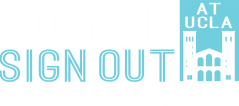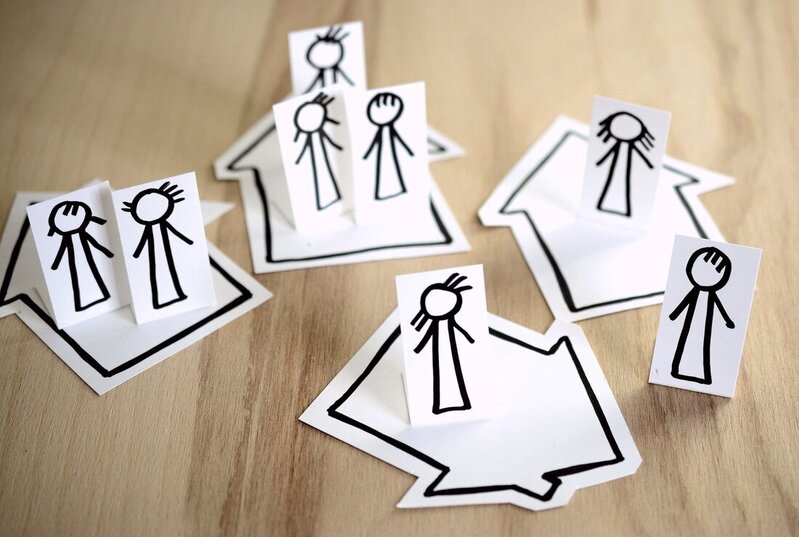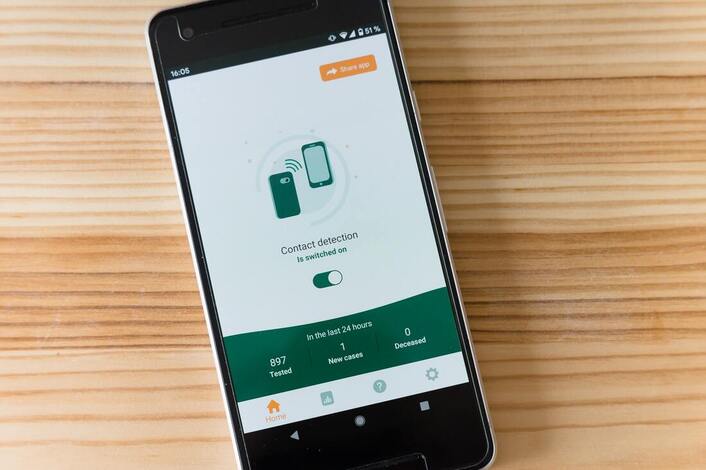Testing Positive: The Next Steps
Yea-Lyn Pak
Edited by Vivian Nguyen
April 27 2021
Edited by Vivian Nguyen
April 27 2021
With COVID-19 still spreading in America and Los Angeles county, it is important to know what steps a person should take if they were to test positive. Information like how to rest and recover safely, when it is safe to be around others again, and contact tracing steps is important for everyone to know to facilitate a faster recovery and limit the spread of COVID-19. Also, keep up-to-date with the latest news from the CDC about which masks to wear, what precautions to take, and any other significant updates.
Testing Positive and Experiencing Symptoms
If after testing positive, an individual begins exhibiting symptoms, they should stay home, take care of themselves, and be in contact with their physician if possible and as soon as possible. Resting and staying hydrated are key parts of the recovery process. Over-the-counter medication, like Tylenol and other acetaminophen medications, can help relieve fevers and symptoms. However, if an individual starts experiencing shortness of breath or other emergency warning signs, they should call 911 or visit the emergency room. Emergency warning signs include shortness of breath, continuous pain or pressure in the chest, confusion, blue lips or face, and difficulty staying awake. In contrast, for individuals with milder symptoms who are recovering at home, where other family members are also staying, individuals should try to isolate themselves in a separate room and use different bathrooms if possible. Individuals should also wear a mask around the house and try to distance themselves from family members. If an individual is living in a shared house with close quarters, other family or household members should also take precautionary measures, especially when going out in public. They should limit grocery runs and other errands to one or two designated members if possible, limit close contact with the sick individual, wear a mask and avoid crowds in public, and take social distancing and sanitary precautions if using public transportation. If sharing a car, individuals should open windows for improved airflow and sit with space in between each other. Vulnerable members who are at increased risk of severe illness should avoid taking care of sick individuals in the household and also avoid taking care of children.
When to End Isolation
After testing positive for COVID-19, the length of the isolation period for each individual depends on a case-by-case basis. The CDC recommends that individuals who were mildly sick can be around others ten days after symptoms first appeared. However, this ten day period does not apply unless an individual has gone twenty-four hours without a fever while not using fever-reducing medications. Additionally, other symptoms of COVID-19 must be improving, but the loss of taste and smell can persist for months after recovery and are not reason alone for isolation. For individuals who displayed no symptoms but test positive for COVID-19, the CDC recommends isolating for ten days after the initial positive test result. While it is not required, some healthcare providers will recommend individuals test again after ten days. The guidelines above do not apply to individuals who were severely sick or have a compromised immune system. These individuals should self-isolate for longer than ten days, and this period of isolation can last up to twenty days after symptoms first appeared. Individuals with compromised immune systems should test for COVID-19 before being around others again and be in contact with their doctor.
Testing Positive and Experiencing Symptoms
If after testing positive, an individual begins exhibiting symptoms, they should stay home, take care of themselves, and be in contact with their physician if possible and as soon as possible. Resting and staying hydrated are key parts of the recovery process. Over-the-counter medication, like Tylenol and other acetaminophen medications, can help relieve fevers and symptoms. However, if an individual starts experiencing shortness of breath or other emergency warning signs, they should call 911 or visit the emergency room. Emergency warning signs include shortness of breath, continuous pain or pressure in the chest, confusion, blue lips or face, and difficulty staying awake. In contrast, for individuals with milder symptoms who are recovering at home, where other family members are also staying, individuals should try to isolate themselves in a separate room and use different bathrooms if possible. Individuals should also wear a mask around the house and try to distance themselves from family members. If an individual is living in a shared house with close quarters, other family or household members should also take precautionary measures, especially when going out in public. They should limit grocery runs and other errands to one or two designated members if possible, limit close contact with the sick individual, wear a mask and avoid crowds in public, and take social distancing and sanitary precautions if using public transportation. If sharing a car, individuals should open windows for improved airflow and sit with space in between each other. Vulnerable members who are at increased risk of severe illness should avoid taking care of sick individuals in the household and also avoid taking care of children.
When to End Isolation
After testing positive for COVID-19, the length of the isolation period for each individual depends on a case-by-case basis. The CDC recommends that individuals who were mildly sick can be around others ten days after symptoms first appeared. However, this ten day period does not apply unless an individual has gone twenty-four hours without a fever while not using fever-reducing medications. Additionally, other symptoms of COVID-19 must be improving, but the loss of taste and smell can persist for months after recovery and are not reason alone for isolation. For individuals who displayed no symptoms but test positive for COVID-19, the CDC recommends isolating for ten days after the initial positive test result. While it is not required, some healthcare providers will recommend individuals test again after ten days. The guidelines above do not apply to individuals who were severely sick or have a compromised immune system. These individuals should self-isolate for longer than ten days, and this period of isolation can last up to twenty days after symptoms first appeared. Individuals with compromised immune systems should test for COVID-19 before being around others again and be in contact with their doctor.
Image Source: Markus Winkler
Contact Tracing
After receiving a positive result on a COVID-19 test, an individual should provide information to close contacts and people they have been in contact with through a system known as contact tracing. Contact tracing looks for and alerts the people who have come into contact with an individual who has tested positive. This system is especially important for diseases like COVID-19, where an individual can start being infectious two days before they experience symptoms. Once an individual receives a positive result, a health department staff should be calling to ask for contact tracing information. Contact tracing helps slow the spread of COVID-19 by letting people know they may have been exposed to the virus. This allows people to then take precautionary measures like getting themselves tested and quarantining, preventing them from spreading the virus even more. Personal information is kept confidential by health department staff, which means an individual’s personal and medical information will only be shared with people who need to know, like one’s healthcare provider. Staff will not ask for information like social security number, money, bank account information, salary information, and credit card numbers. Furthermore, the health department will only contact people a positive individual has come into close contact with and will not release a positive individual’s name. Close contact is defined as anyone who came within six feet of an infected individual for a total of fifteen minutes or more, starting two days before the infected individual started experiencing symptoms. This definition of close contact applies to everyone, even if both parties were wearing masks.
After receiving a positive result on a COVID-19 test, an individual should provide information to close contacts and people they have been in contact with through a system known as contact tracing. Contact tracing looks for and alerts the people who have come into contact with an individual who has tested positive. This system is especially important for diseases like COVID-19, where an individual can start being infectious two days before they experience symptoms. Once an individual receives a positive result, a health department staff should be calling to ask for contact tracing information. Contact tracing helps slow the spread of COVID-19 by letting people know they may have been exposed to the virus. This allows people to then take precautionary measures like getting themselves tested and quarantining, preventing them from spreading the virus even more. Personal information is kept confidential by health department staff, which means an individual’s personal and medical information will only be shared with people who need to know, like one’s healthcare provider. Staff will not ask for information like social security number, money, bank account information, salary information, and credit card numbers. Furthermore, the health department will only contact people a positive individual has come into close contact with and will not release a positive individual’s name. Close contact is defined as anyone who came within six feet of an infected individual for a total of fifteen minutes or more, starting two days before the infected individual started experiencing symptoms. This definition of close contact applies to everyone, even if both parties were wearing masks.
Featured Image Source: congerdesign



